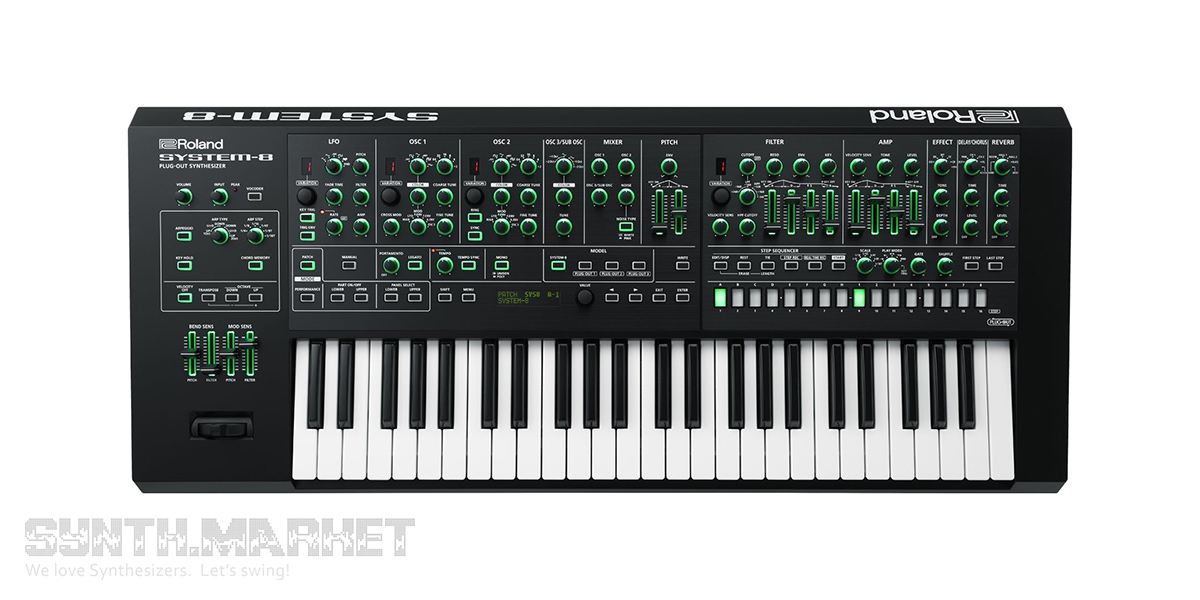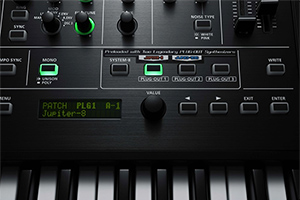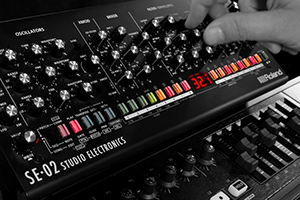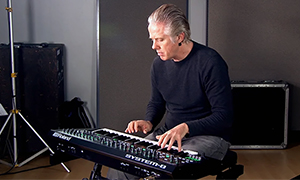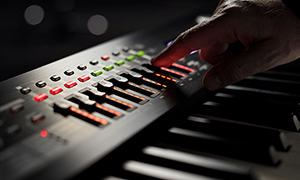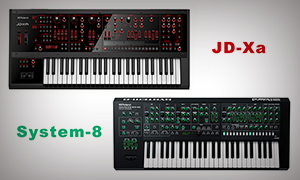The System-8 synthesizer is a kind of a virtual analog synthesizer that manages user-loaded audio libraries (PLUG-OUT), in addition to those already pre-installed initially. There are 3 instruments based on this technology - System-1 mini synthesizer, System-1m rack module and full-size and full-featured System-8. All of them are part of a wider group of instruments ROLAND AIRA.
All these devices use the technology of ACB (Analog Circuit Behavior Modeling), which allows to reliably recreate the process and the result of the functioning of the analog synthesizer. As for all the instruments in the series, the classic approach in the interface and familiar analog synth-like control elements - controllers for oscillators, subwoofers and LFOs (here - virtual), envelope generators, effects, mixer, sequencer. All the synthesizers of the series include 2 new types of waveforms - super square and super sine, in addition to the patented super saw. Compared to System-1, the resolution of the adjustment scale of [digital] filters was increased twice - up to 255 values, which allows for more precise adjustment and more "smooth" transitions.
Not all professionals appreciated System-1 with its very controversial mini-keyboard and only basic control functions on the front panel and therefore the initial tandem System-1 - System-1m made people to opt for System-1m. However, all the fans of the analog appreciated the ACB concept in combination with PLUG-OUT and the new System-8, which gives what its predecessors lacked, a completely cloudless future, depending only on the scheduled supply of new audio engines by Roland.
The PLUG-OUT approach means that the lucky owner of one of the series' synthesizers can easily upload new sound libraries (or rather, call them "sound engines") having no problem, in addition to those that are featured in the basic configuration. And the basic configuration offers the quality emulation of the king of analog synthesizers - Roland Jupiter-8. In 2017 System-8 will be shipped with an integrated Roland Juno-106 library, another very popular analog synthesizer of the mid-80's. You can use up to 3 engines in real time, switching them with dedicated buttons, and, unlike System-1, you can now use them in parallel, including when splitting the keyboard into zones! Today you can buy SH-2, SH-101 and PROMARS. Roland promises new sound engines coming soon.
Key specification of the System-8 synthesizer (maximum possible values are given, which may differ in this or that configuration of the sound engine, depending on its progenitor):
Polyphony up to 8 virtual analog voices;
2 oscillators per voice + 1 sub-oscillator (the types of waveforms depend on the engine; in theory, this can be any variation of all known old and new synthesizers: Roland - saw, super saw, triangular wave, rectangular wave, super square and super sine);
1 LFO;
AR envelope generators for pitch, ADSR for filter and gain;
Effect-processor;
16x4 step sequencer.
The instrument interface comprises the following controllers and I/O:
Dynamic 4-octave keyboard (49 keys) without aftertouch;
4-axis classic for Roland synthesizers pitch/mod controller and fine tuning sliders next to it;
Monochrome digit-letter mini-display (same as in JD-Xa) + 3 numeric mini-displays for each oscillator unit;
Encoders for adjusting all parameters - oscillators, mixer, pitch, amplifier, effect processor;
Sliders for envelope control;
CV/Gate outputs for sending control signals to external devices, such as vintage analog synthesizers and sequencers;
MIDI IN, OUT, USB to computer with MIDI support;
3 configurable inputs for pedal controllers.
An SD memory card slot (XC).







